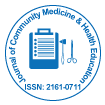开放获取期刊获得更多读者和引用
700 种期刊 和 15,000,000 名读者 每份期刊 获得 25,000 多名读者
索引于
- 哥白尼索引
- 谷歌学术
- 夏尔巴·罗密欧
- Genamics 期刊搜索
- 安全点亮
- 参考搜索
- 哈姆达大学
- 亚利桑那州EBSCO
- OCLC-世界猫
- 普布隆斯
- 日内瓦医学教育与研究基金会
- 欧洲酒吧
- ICMJE
有用的链接
开放获取期刊
分享此页面
抽象的
The Quantitative Effect of Community-Based Participatory Research on Building Teamwork among Medical and Long-Term Care Services in Rural Japan: The Tome Medical Project
Kemmyo Sugiyama and Toru Tsuboy
Background: Comprehensive teamwork among medical experts, nursing-care experts and non-experts are essential in promoting medical and nursing care services in a community for the well-being of all residents. For accomplishment, inter-professional workshops have been conducted in various places throughout Japan. However, only a few studies have evaluated the effect of these activities, and most of them included only medical experts. Thus, we launched a community-based participatory research (CBPR), consisted of serial workshops in Tome City, a northeastern rural area in Japan. To our knowledge, this is the first study to quantitively evaluate the effect of CBPR.
Methods: We held workshops including small lectures at a frequency of 1-2 times a month during six months. The participants discussed issues of medical or long-term care in Tome City. At baseline and the final workshops, we distributed to the participants questionnaires where they graded scores on the quality of cooperation among medical and nursing-care services in Tome. The summed scores were used as our main outcome. The higher scores mean better integration.
Results: The median (range) of the scores for overall participants were 101.0 (66.0) at baseline, and 89.0 (76.0) at the end, with no statistical difference observed (p=0.50). Similar results were observed when stratified by number of times attending to other workshops and medical or nursing-care profession.
Conclusion: No improvement in collaboration was observed after serial workshops in 6 months. Further discussions would be needed how we can promote better collaboration among professionals and citizens for the achievement of residents’ well-being.

 English
English  Spanish
Spanish  Russian
Russian  German
German  French
French  Japanese
Japanese  Portuguese
Portuguese  Hindi
Hindi